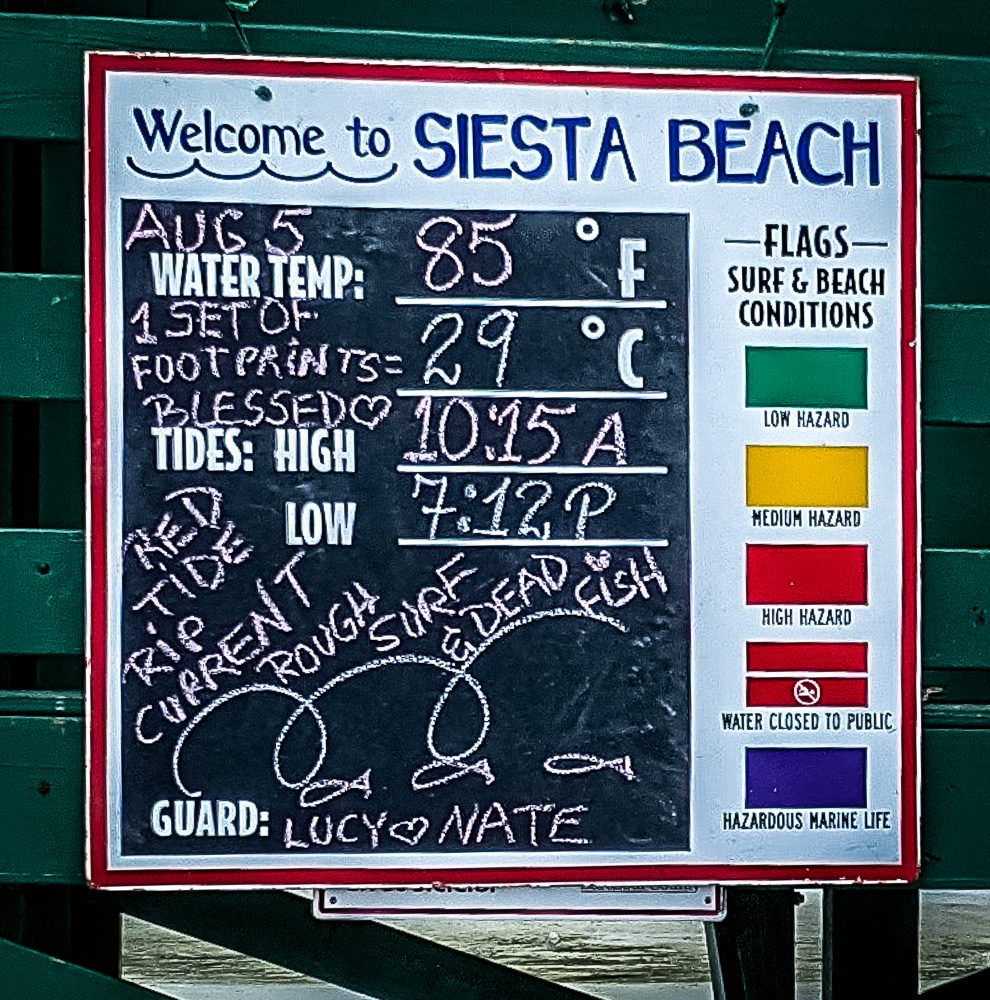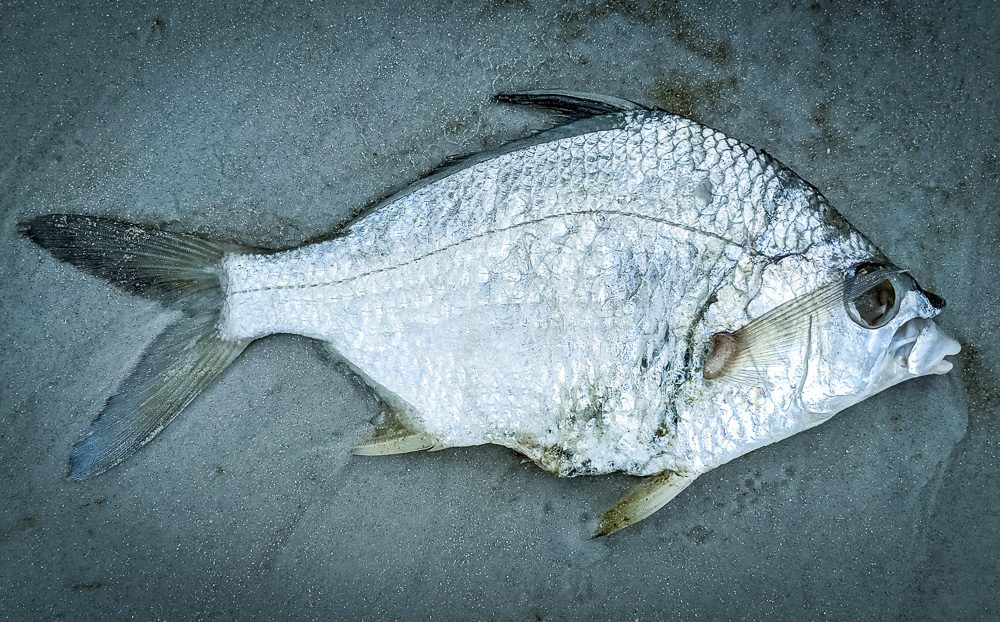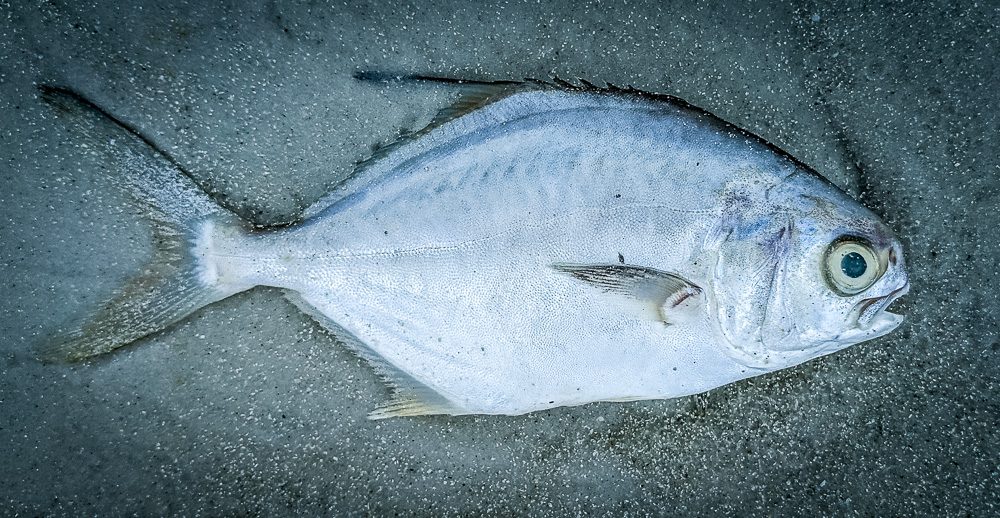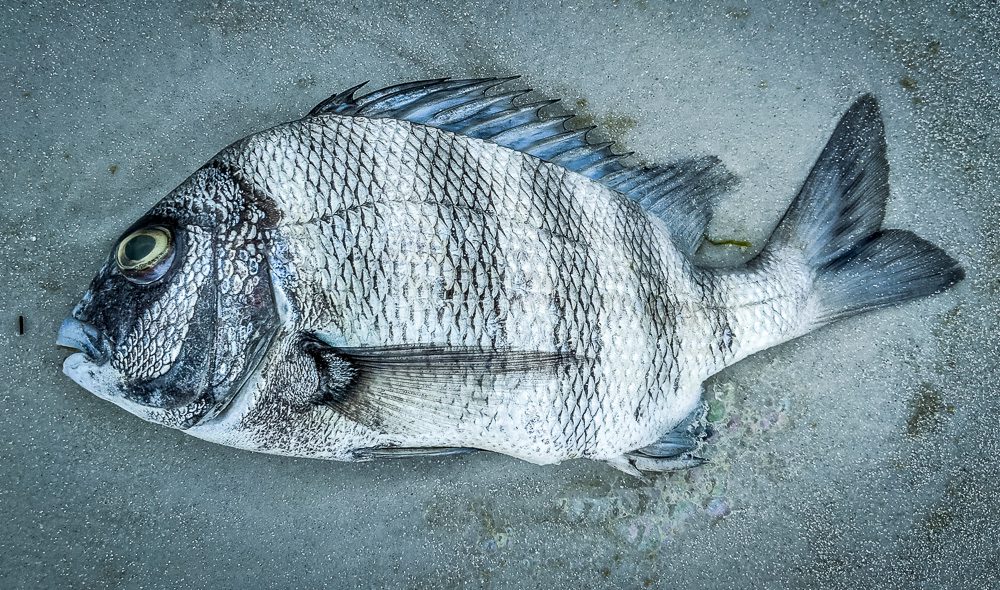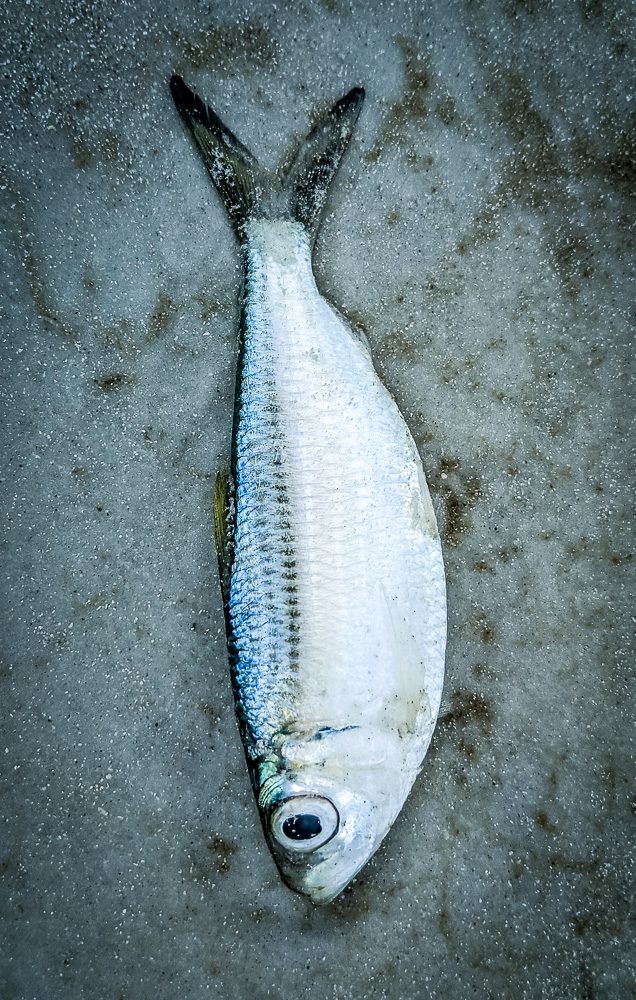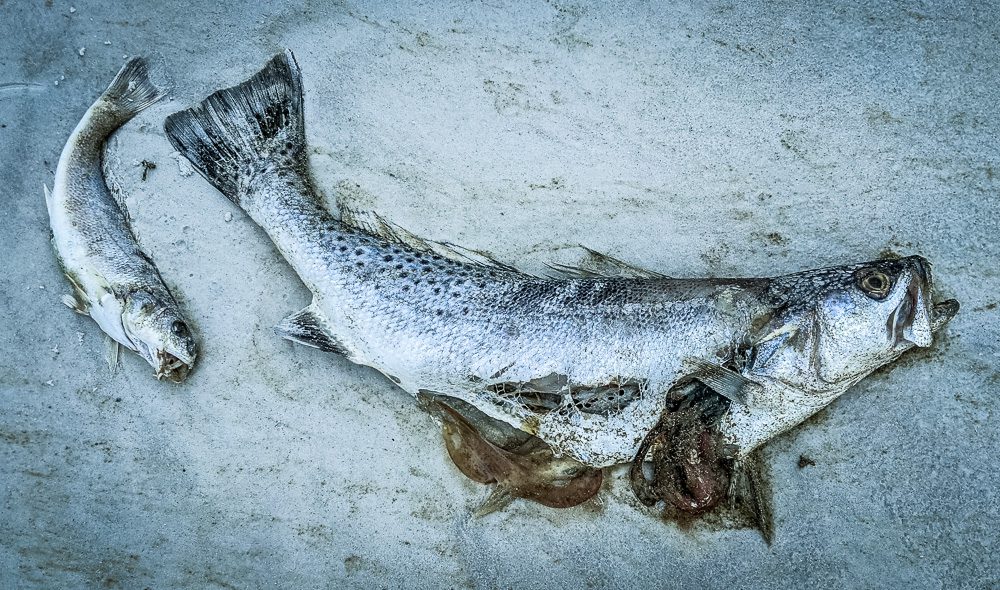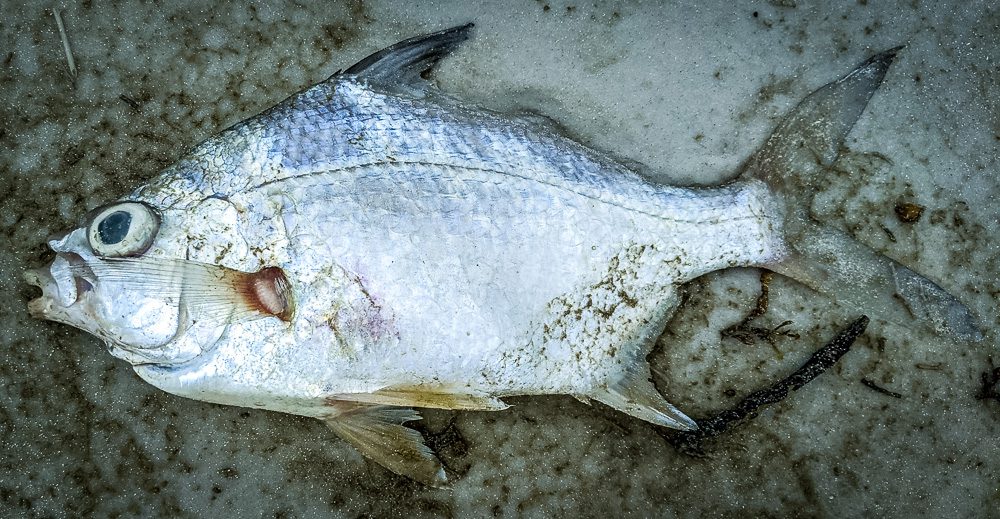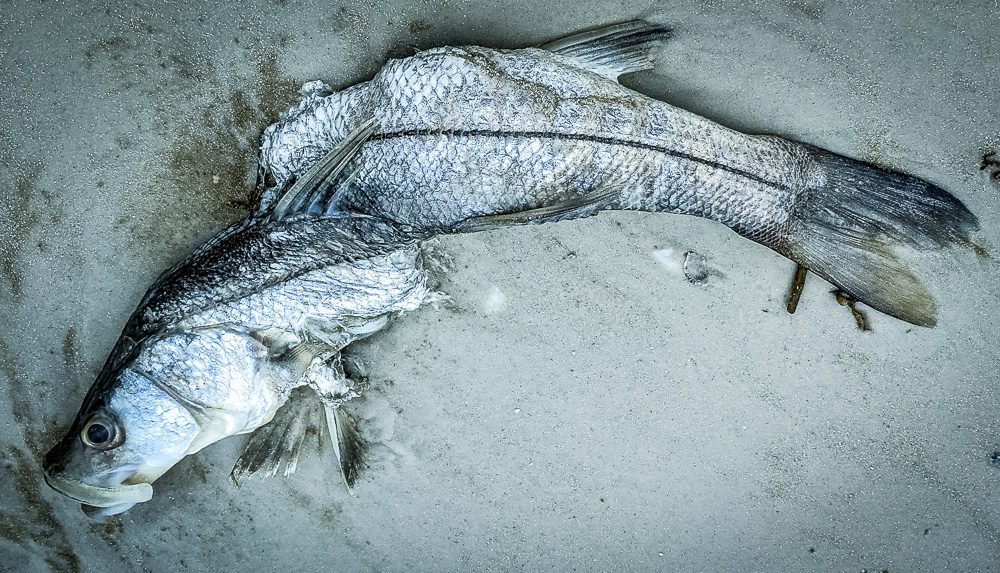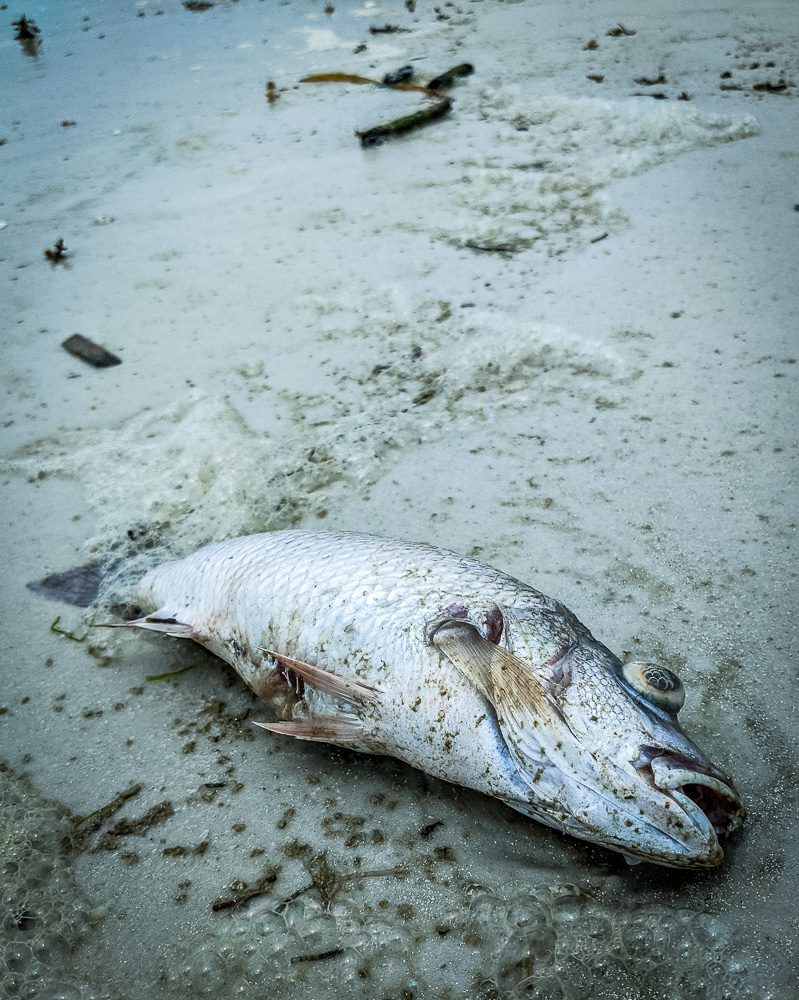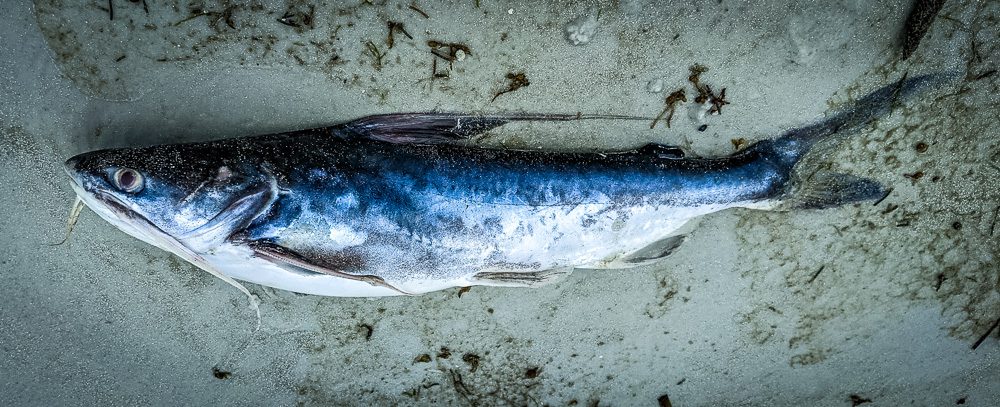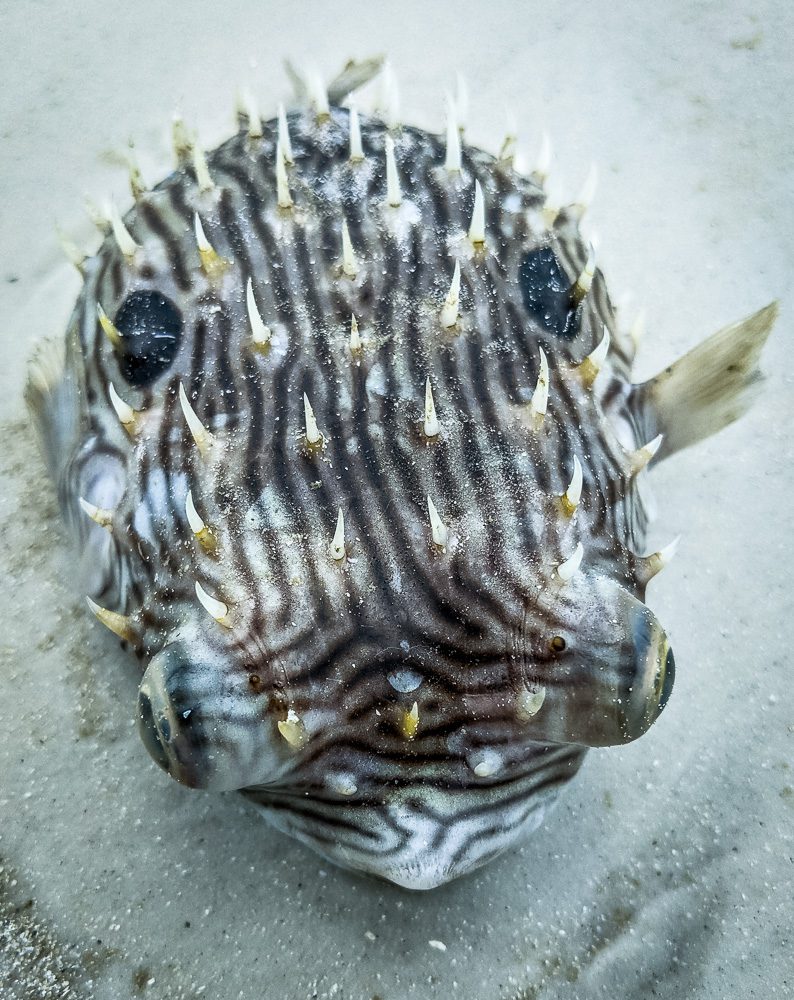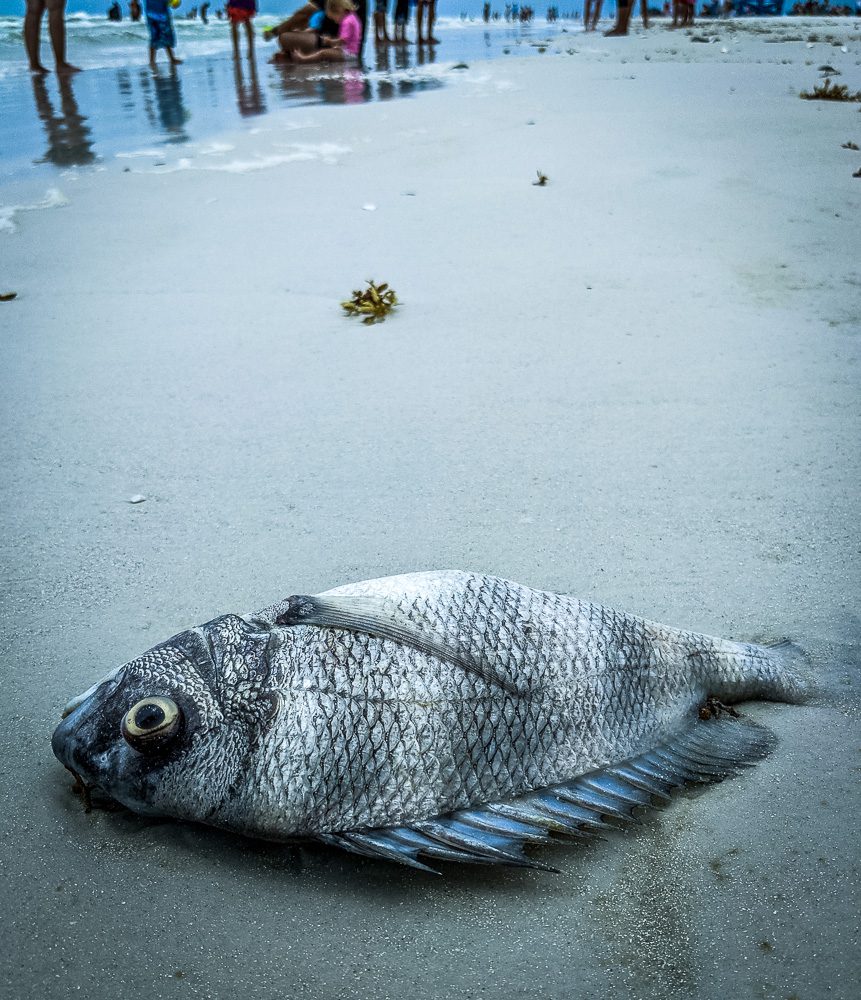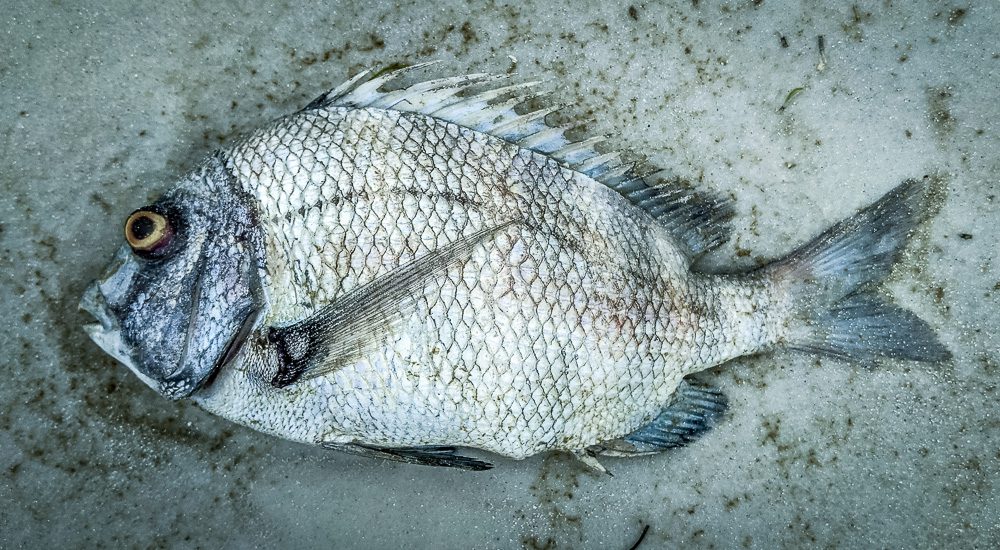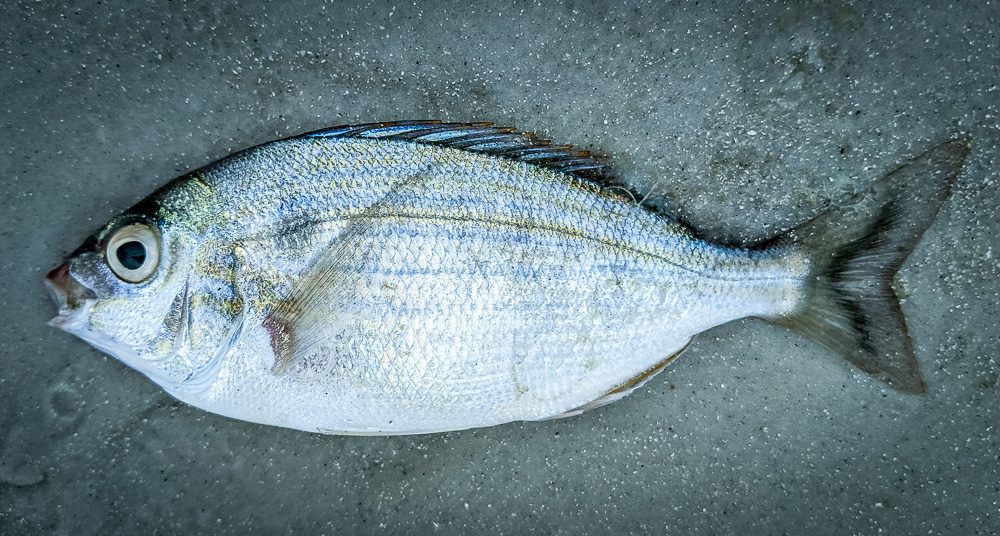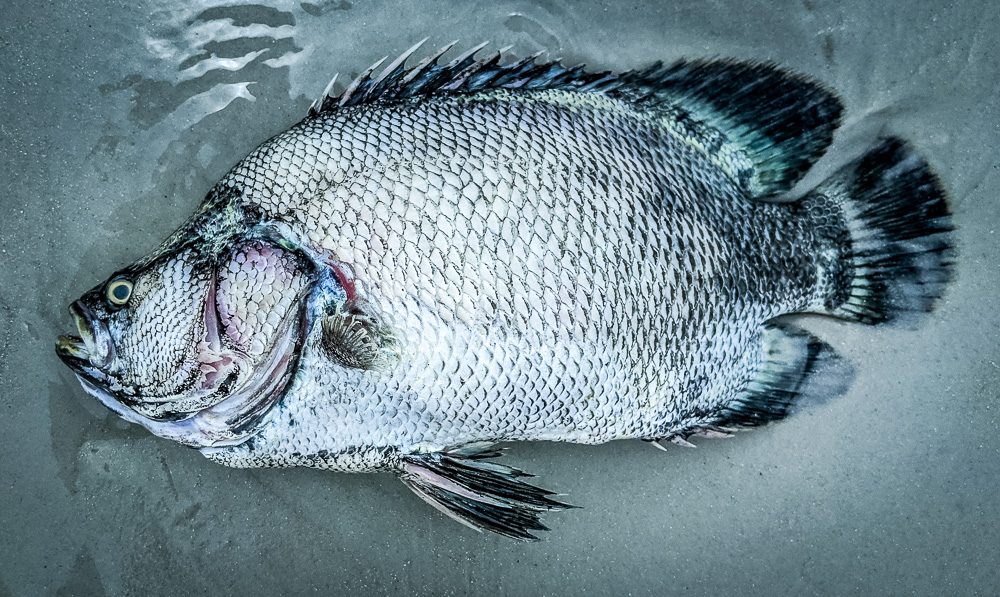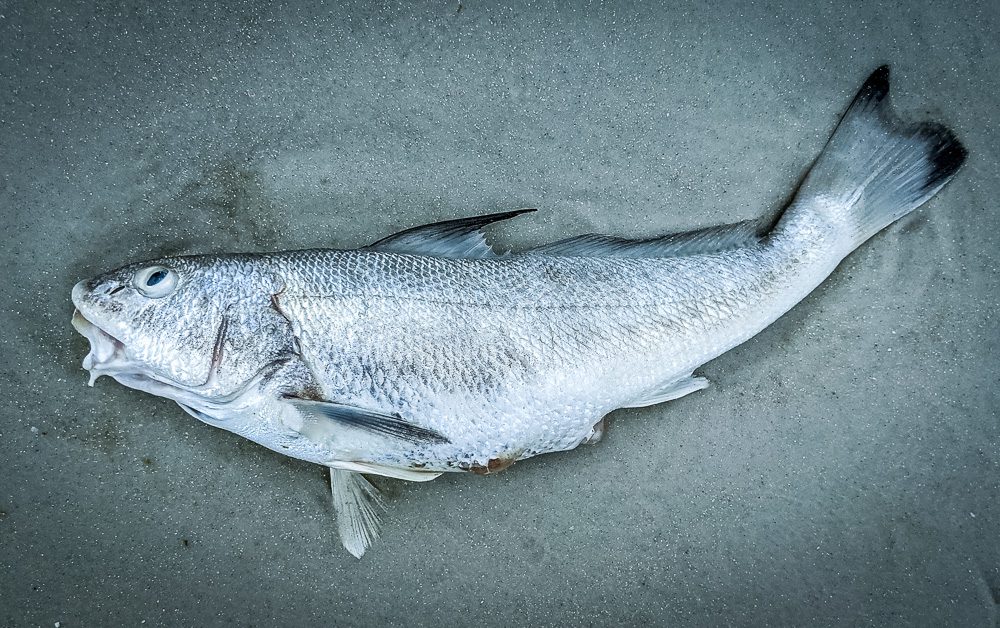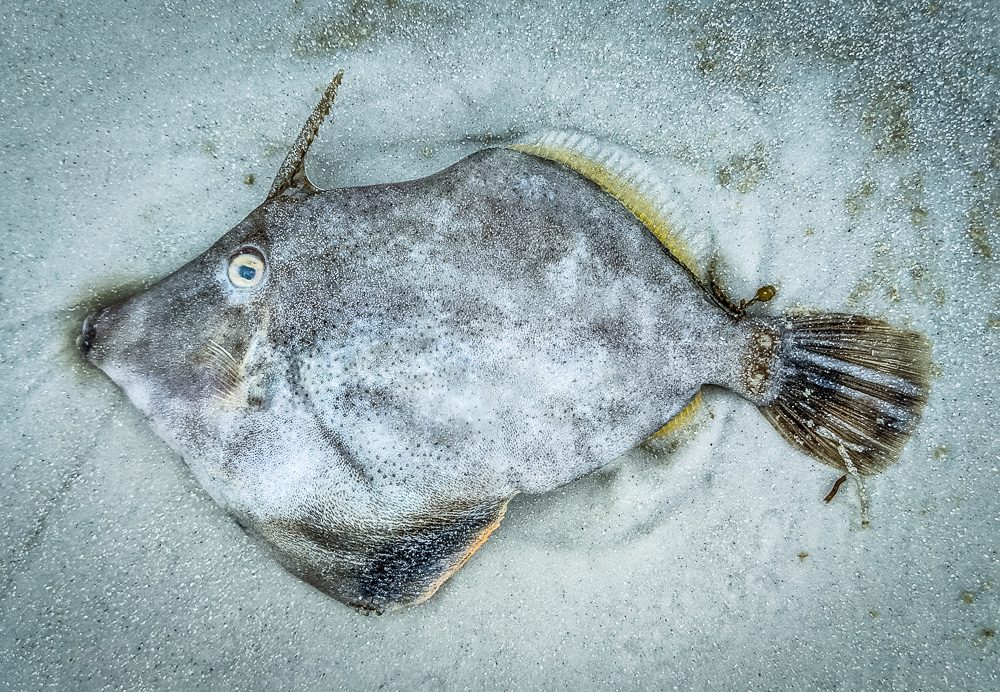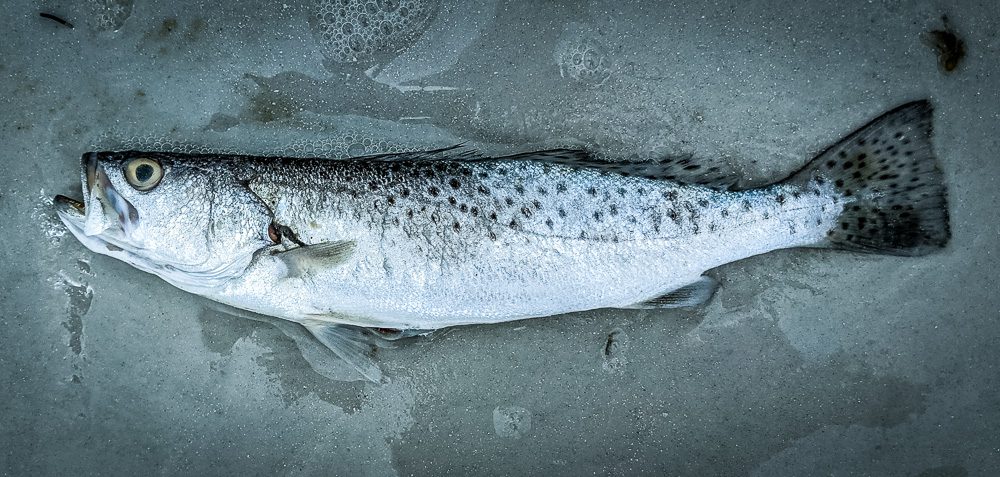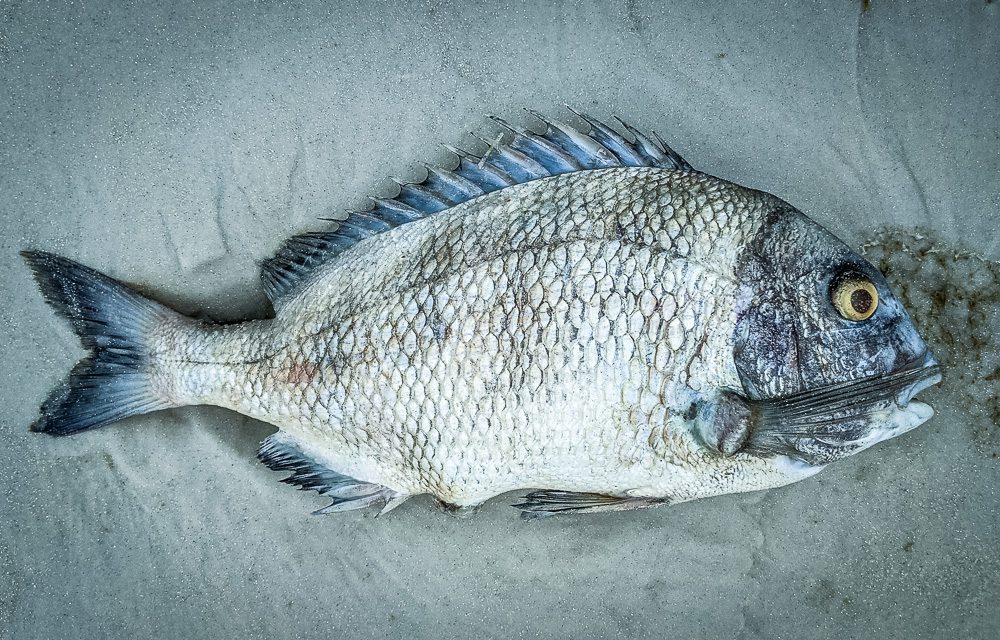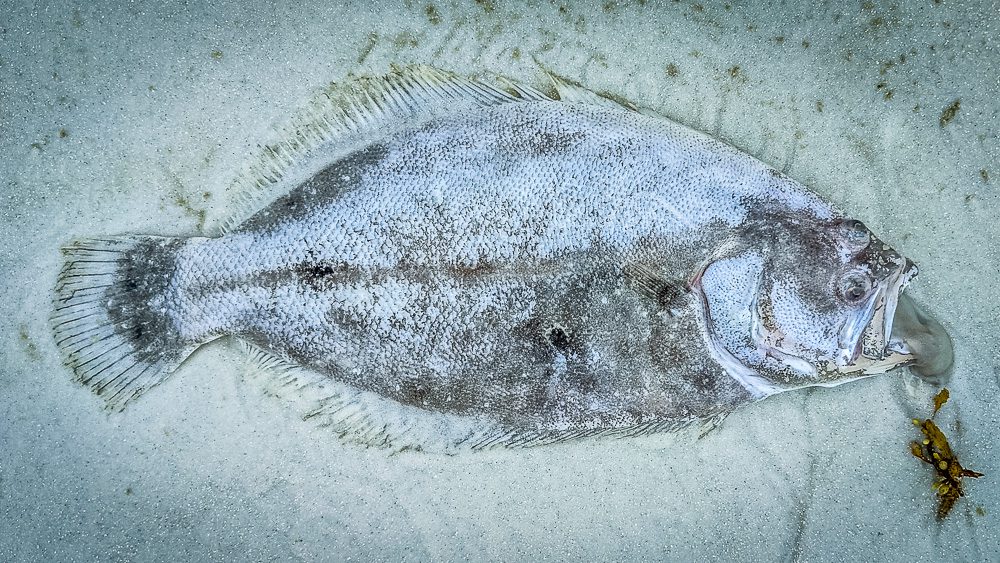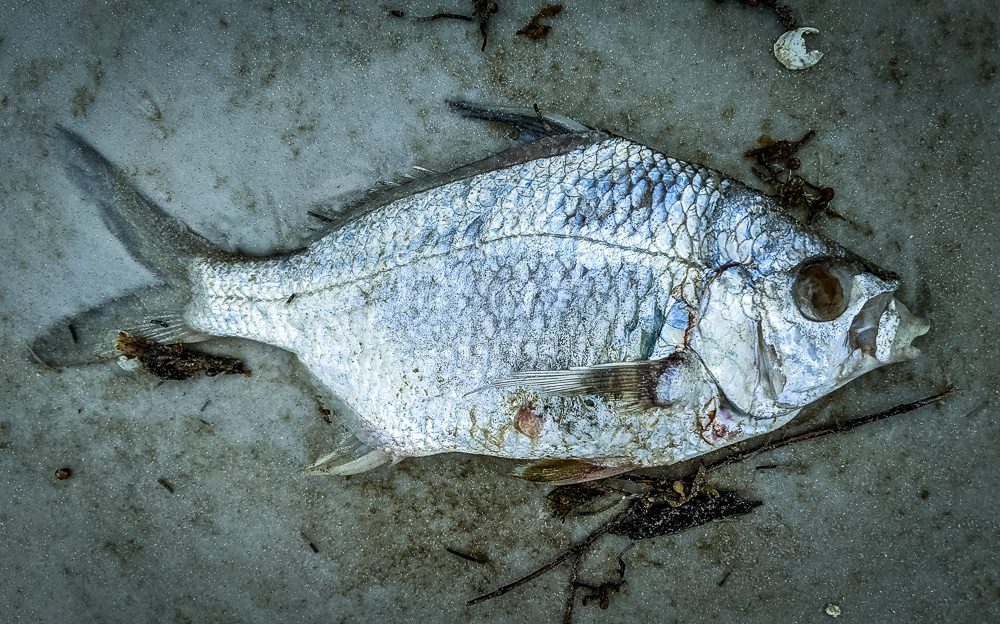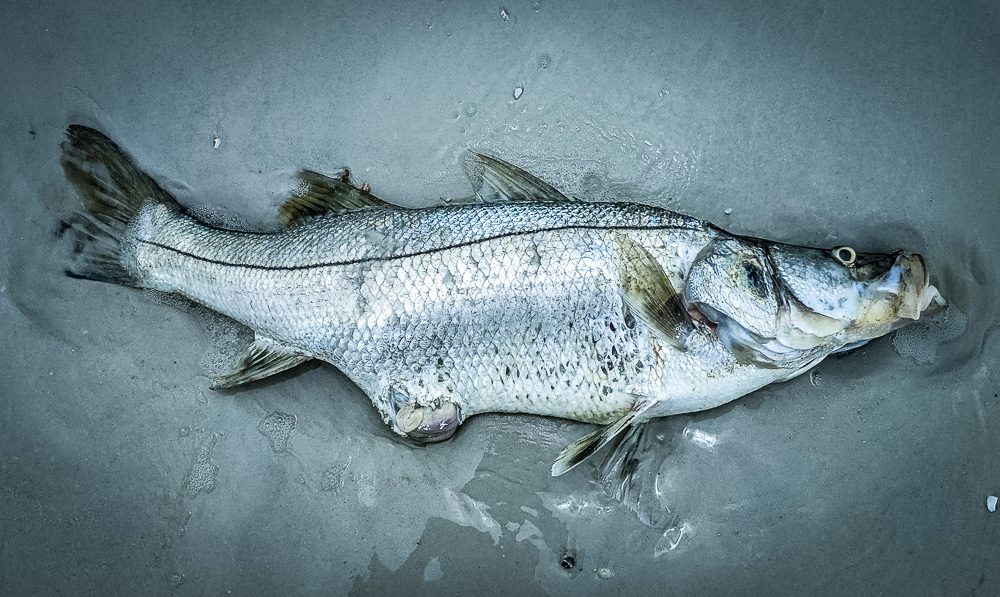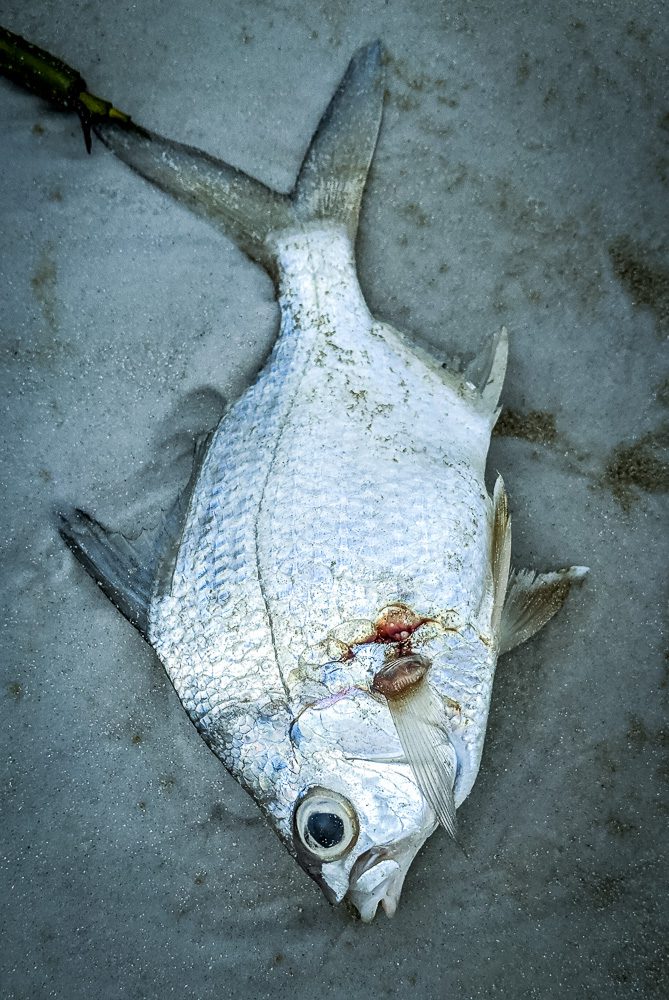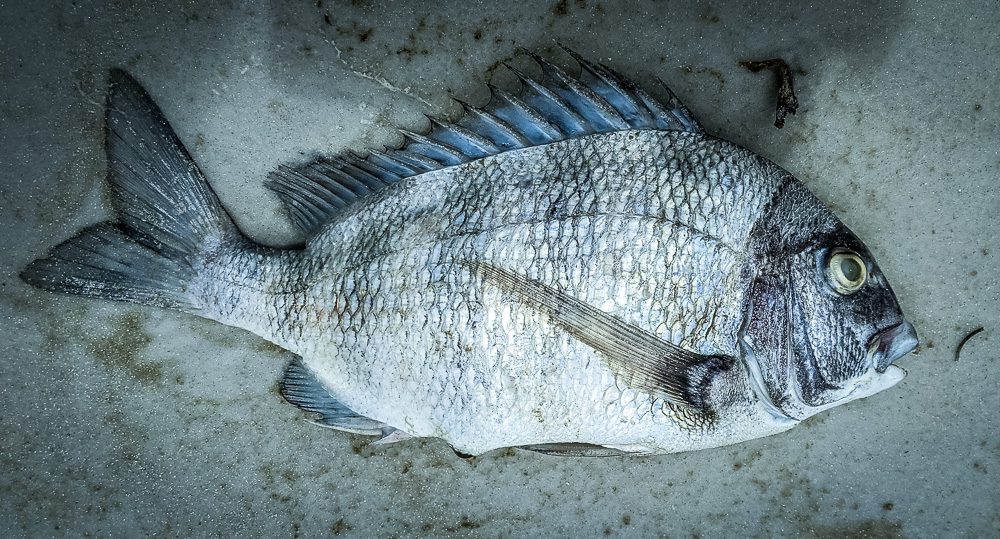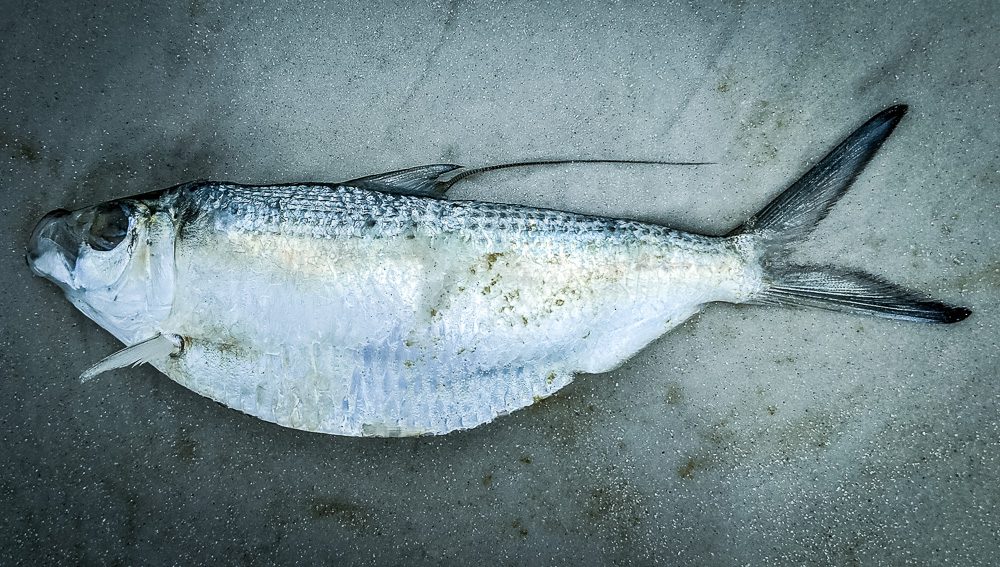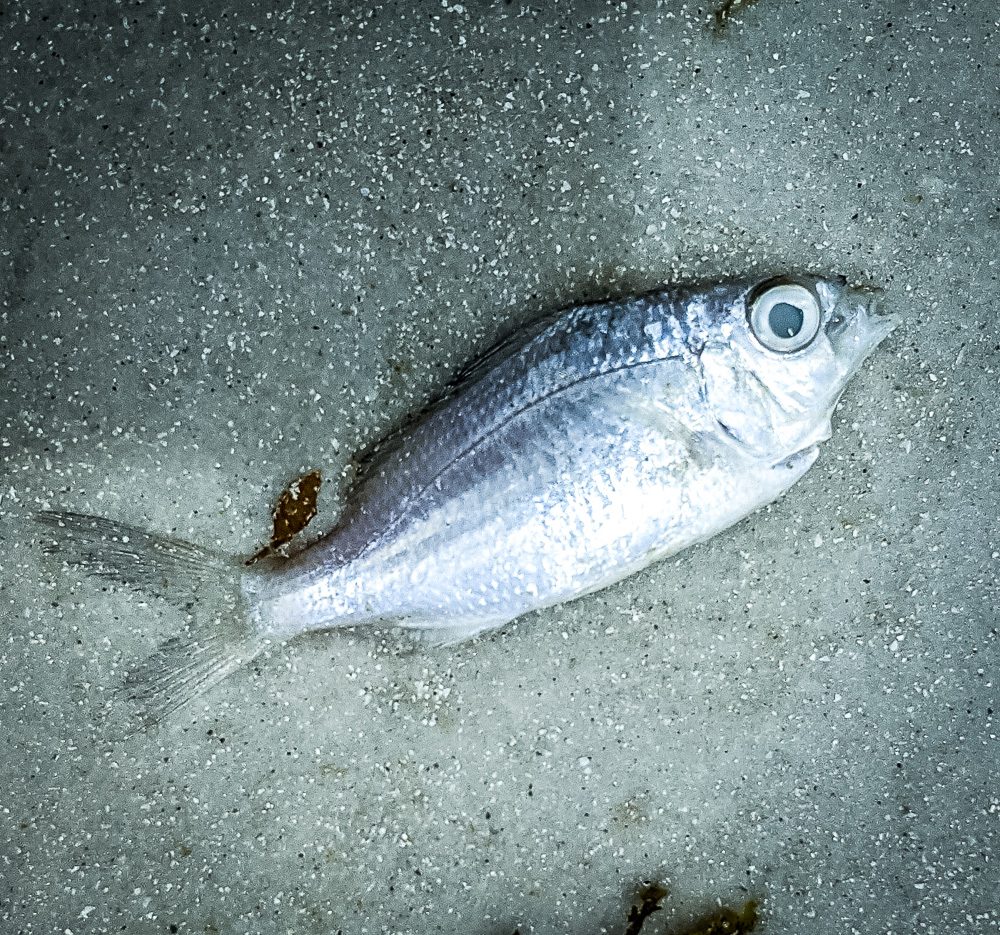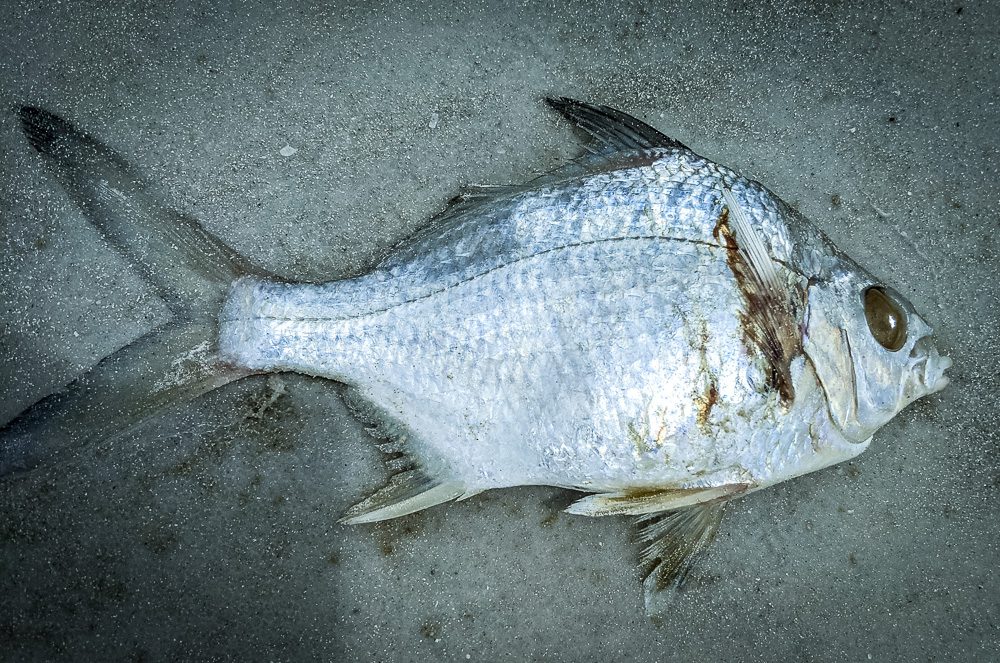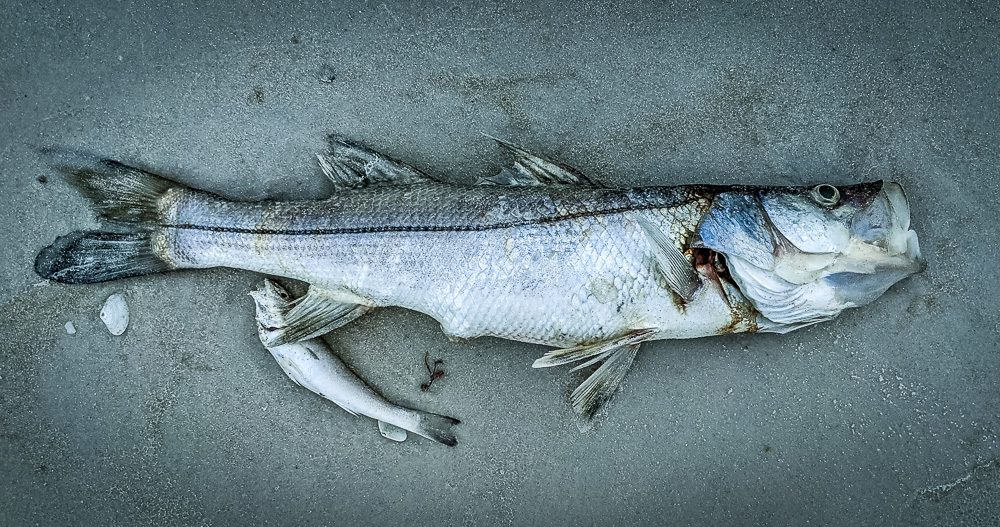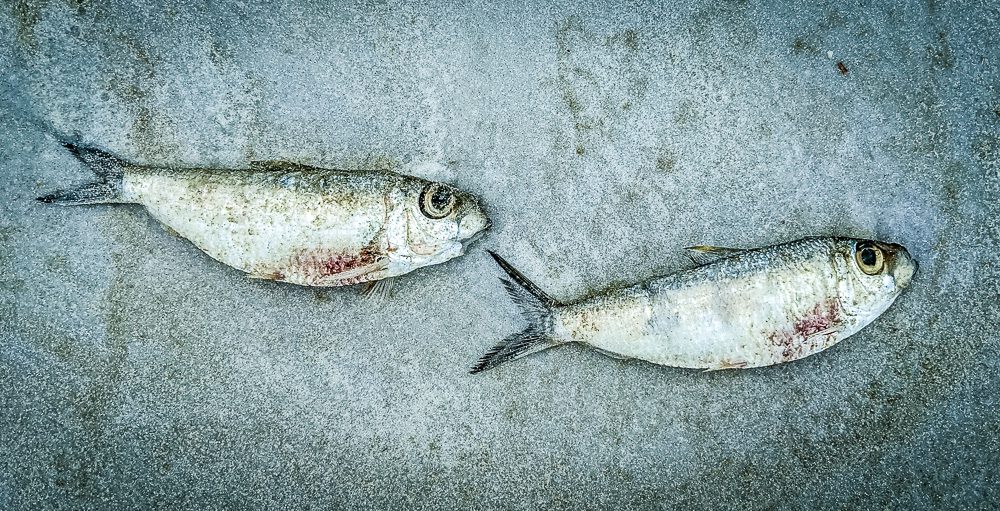If there’s any silver lining to red tide, it’s that I get to see all of these fish on the beach. Interestingly, it didn’t stop people sunbathing or swimming, even though I had a cough that kicked in after a half hour of walking.
As a naturalist who has spent countless hours exploring the vibrant ecosystems of Florida, I have witnessed both the enchanting beauty and the challenging phenomena that define this unique region. Among the latter, one of the most intriguing and complex events is the occurrence of red tide, a phenomenon driven by the microscopic organism Karenia brevis. While its vivid name may evoke images of a dramatic sunset, red tide’s impact on marine life and human activities is far more profound and multifaceted. Let us delve into the captivating world of Karenia brevis, unraveling its mysteries and understanding its role in Florida’s marine ecosystems.
The Microscopic Culprit: Karenia brevis
Karenia brevis is a type of dinoflagellate, a single-celled organism that inhabits the Gulf of Mexico. Under normal conditions, these microorganisms exist in relatively low concentrations, coexisting harmlessly with the myriad of marine life. However, when environmental conditions align—particularly warm water temperatures, nutrient influx, and calm seas—Karenia brevis populations can explode, leading to what we know as red tide.
The name “red tide” comes from the reddish-brown discoloration of the water caused by the dense concentration of these microscopic algae. While the water itself takes on a striking hue, the consequences of a red tide event extend far beyond its visual impact. Karenia brevis produces potent neurotoxins called brevetoxins, which can have severe effects on marine life, humans, and coastal economies.
The Life Cycle of Karenia brevis
Understanding the life cycle of Karenia brevis is crucial to grasping the dynamics of red tide. These dinoflagellates reproduce through a process called binary fission, where a single cell divides into two identical daughter cells. Under favorable conditions, this process can occur rapidly, leading to exponential population growth.
Karenia brevis thrives in the nutrient-rich waters of the Gulf of Mexico, particularly where nutrient runoff from agricultural and urban areas enters the ocean. These nutrients, primarily nitrogen and phosphorus, act as fertilizers, promoting the rapid growth of algae populations. When combined with warm water temperatures and calm seas, these conditions create a perfect storm for red tide blooms.
The Ecological Impact
The effects of red tide on marine ecosystems can be devastating. Brevetoxins produced by Karenia brevis disrupt the normal functioning of marine organisms, particularly those with gills, such as fish and shellfish. These toxins bind to sodium channels in nerve cells, causing neurological disruptions that can lead to paralysis and death.
During a red tide event, it is not uncommon to witness mass fish kills, with thousands of dead fish washing ashore. These scenes can be heart-wrenching, as the lifeless bodies of various species, from small baitfish to larger predators, litter the coastline. Marine mammals, such as dolphins and manatees, are also vulnerable to brevetoxins, experiencing respiratory distress and other health issues.
The impact on shellfish is particularly concerning, as these organisms can accumulate high levels of toxins in their tissues. Consuming contaminated shellfish can lead to neurotoxic shellfish poisoning (NSP) in humans, characterized by symptoms such as nausea, vomiting, dizziness, and in severe cases, respiratory failure. This poses a significant public health risk and often leads to the closure of shellfish harvesting areas during red tide events.
The Human Dimension
Red tide not only affects marine life but also has substantial socio-economic repercussions. Coastal communities that rely on tourism, fishing, and recreation can suffer significant economic losses during red tide outbreaks. The sight and smell of dead fish along the shore, coupled with health advisories against swimming and seafood consumption, deter tourists and impact local businesses.
For residents and visitors, exposure to red tide can cause respiratory irritation, particularly for those with asthma or other pre-existing respiratory conditions. The airborne toxins released by Karenia brevis can lead to symptoms such as coughing, sneezing, and eye irritation, prompting health officials to issue warnings and beach closures.
The Naturalist’s Perspective: Observing and Understanding
As a naturalist, I find the phenomenon of red tide both fascinating and sobering. It is a reminder of the delicate balance within marine ecosystems and the far-reaching impact of human activities on these environments. Observing a red tide event firsthand is a humbling experience, highlighting the interconnectedness of life and the importance of maintaining ecological harmony.
One memorable encounter with red tide occurred during a routine coastal survey. The day began like any other, with the sun casting its golden glow over the calm waters of the Gulf. As I ventured further offshore, I noticed a distinct change in the water’s color, shifting from a vibrant blue to a murky reddish-brown. The pungent odor of decaying fish filled the air, a telltale sign of red tide.
As I approached the affected area, I observed numerous dead fish floating on the surface, their gills splayed open in a silent plea for oxygen. It was a stark reminder of the harsh realities of red tide, a natural phenomenon exacerbated by human influence. While documenting the event, I couldn’t help but reflect on the broader implications of our actions and the urgent need for sustainable practices to mitigate nutrient pollution and protect our oceans.
The Path to Mitigation
Addressing the issue of red tide requires a multifaceted approach that combines scientific research, policy implementation, and community engagement. Scientists are working tirelessly to understand the triggers and mechanisms behind red tide blooms, developing predictive models to forecast outbreaks and inform management strategies.
Reducing nutrient pollution is a critical step in mitigating red tide. This involves implementing best management practices (BMPs) in agriculture to minimize fertilizer runoff, enhancing wastewater treatment facilities to reduce nutrient discharge, and promoting sustainable urban development to limit stormwater runoff. Public awareness campaigns and education initiatives can also play a vital role in encouraging responsible practices and fostering a sense of stewardship among coastal communities.
The Resilience of Nature
Despite the challenges posed by red tide, it is essential to remember the resilience of nature. Marine ecosystems have evolved over millennia to adapt to changing conditions, and while human activities have intensified the frequency and severity of red tide events, there is hope for recovery and restoration.
Efforts to protect and restore coastal habitats, such as seagrass beds and mangrove forests, can enhance the resilience of marine ecosystems. These habitats act as natural filters, trapping and absorbing nutrients before they reach the open ocean. Additionally, they provide crucial shelter and nursery areas for a variety of marine species, supporting biodiversity and ecosystem health.
A Call to Action
As stewards of the natural world, it is our responsibility to protect and preserve the delicate balance of marine ecosystems. By advocating for sustainable practices, supporting scientific research, and fostering a sense of connection to the ocean, we can work towards a future where red tide events are less frequent and less devastating.
The story of Karenia brevis and red tide is a complex and evolving narrative, one that underscores the intricate interplay between natural processes and human influence. As we continue to explore and understand this phenomenon, let us be guided by a commitment to ecological stewardship and a deep appreciation for the wonders of the natural world.
Conclusion
The enigmatic dance of Karenia brevis and the resulting red tide is a powerful reminder of the dynamic and interconnected nature of our marine environments. While the impacts can be severe, both ecologically and economically, there is hope in our collective efforts to understand, mitigate, and adapt to this phenomenon. As naturalists, scientists, and concerned citizens, we must continue to observe, learn, and act, ensuring that the vibrant tapestry of life in Florida’s waters remains resilient and thriving for generations to come.
